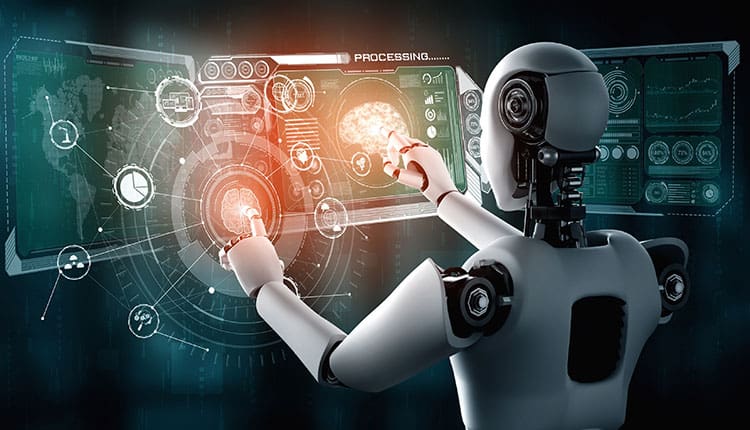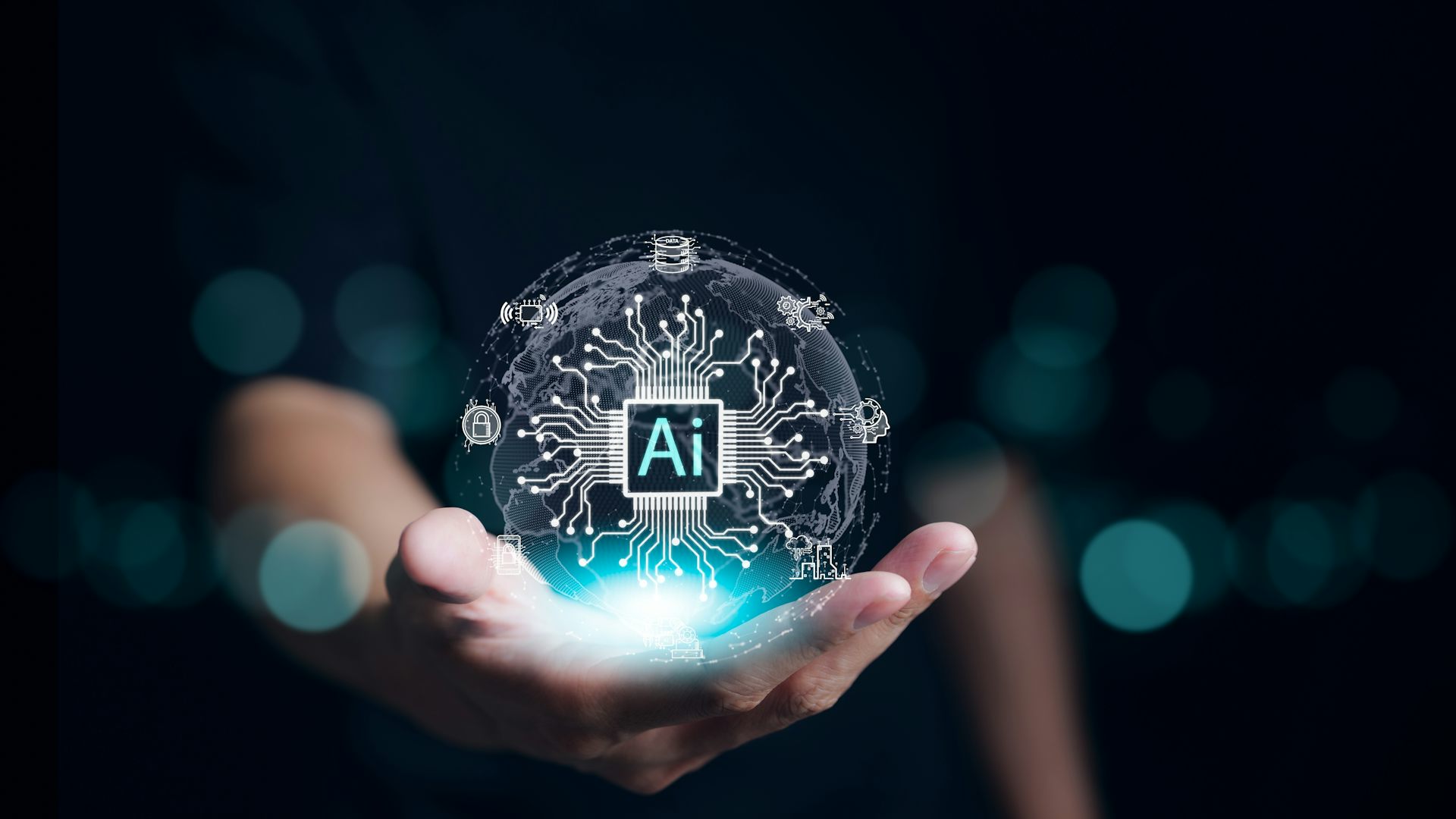This company has no active jobs
About Us
Who Invented Artificial Intelligence? History Of Ai

Can a device think like a human? This concern has actually puzzled researchers and innovators for several years, especially in the context of general intelligence. It’s a question that started with the dawn of artificial intelligence. This field was born from humanity’s biggest dreams in innovation.

The story of artificial intelligence isn’t about a single person. It’s a mix of lots of brilliant minds with time, all contributing to the major wiki.armello.com focus of AI research. AI began with crucial research in the 1950s, a big step in tech.
%20Is%20Used%20In%20Biometrics.jpg)
John McCarthy, a computer science leader, held the Dartmouth Conference in 1956. It’s viewed as AI‘s start as a serious field. At this time, experts believed makers endowed with intelligence as smart as humans could be made in simply a few years.
The early days of AI had lots of hope and huge government support, which sustained the history of AI and the pursuit of artificial general intelligence. The U.S. government invested millions on AI research, showing a strong commitment to advancing AI use cases. They thought new tech advancements were close.

From Alan Turing’s big ideas on computer systems to Geoffrey Hinton’s neural networks, AI‘s journey reveals human creativity and tech dreams.
The Early Foundations of Artificial Intelligence
The roots of artificial intelligence return to ancient times. They are tied to old philosophical ideas, mathematics, and the concept of artificial intelligence. Early operate in AI originated from our desire to understand logic and resolve issues mechanically.
Ancient Origins and Philosophical Concepts
Long before computer systems, ancient cultures established clever ways to factor that are foundational to the definitions of AI. Thinkers in Greece, China, and India produced methods for abstract thought, which prepared for decades of AI development. These concepts later on shaped AI research and contributed to the advancement of various types of AI, including symbolic AI programs.
- Aristotle originated formal syllogistic reasoning
- Euclid’s mathematical proofs demonstrated methodical reasoning
- Al-Khwārizmī established algebraic methods that prefigured algorithmic thinking, which is foundational for modern-day AI tools and applications of AI.
Advancement of Formal Logic and Reasoning
Synthetic computing started with major work in philosophy and math. Thomas Bayes produced ways to reason based on probability. These ideas are essential to today’s machine learning and the continuous state of AI research.
” The first ultraintelligent machine will be the last innovation humankind needs to make.” – I.J. Good
Early Mechanical Computation
Early AI programs were built on mechanical devices, however the structure for powerful AI systems was laid during this time. These machines could do complicated math by themselves. They showed we could make systems that believe and imitate us.
- 1308: Ramon Llull’s “Ars generalis ultima” checked out mechanical knowledge development
- 1763: Bayesian inference developed probabilistic reasoning strategies widely used in AI.
- 1914: The first chess-playing maker demonstrated mechanical thinking capabilities, showcasing early AI work.
These early actions led to today’s AI, where the dream of general AI is closer than ever. They turned old concepts into real innovation.
The Birth of Modern AI: The 1950s Revolution
The 1950s were a crucial time for artificial intelligence. Alan Turing was a leading figure in computer technology. His paper, “Computing Machinery and Intelligence,” asked a huge question: “Can devices believe?”
” The initial concern, ‘Can makers think?’ I believe to be too useless to deserve discussion.” – Alan Turing
Turing developed the Turing Test. It’s a method to examine if a device can believe. This concept altered how individuals thought about computers and AI, causing the development of the first AI program.
- Introduced the concept of artificial intelligence examination to assess machine intelligence.
- Challenged traditional understanding of computational capabilities
- Developed a theoretical framework for future AI development
The 1950s saw huge changes in innovation. Digital computers were becoming more effective. This opened up new areas for AI research.
Scientist began checking out how devices might believe like people. They moved from basic mathematics to resolving intricate issues, illustrating the evolving nature of AI capabilities.
Essential work was carried out in machine learning and problem-solving. Turing’s concepts and others’ work set the stage for AI’s future, influencing the rise of artificial intelligence and the subsequent second AI winter.
Alan Turing’s Contribution to AI Development
Alan Turing was a key figure in artificial intelligence and is typically considered a pioneer in the history of AI. He altered how we think of computer systems in the mid-20th century. His work started the journey to today’s AI.
The Turing Test: Defining Machine Intelligence
In 1950, Turing developed a brand-new way to check AI. It’s called the Turing Test, an essential principle in comprehending the intelligence of an average human compared to AI. It asked a simple yet deep concern: Can machines believe?

- Introduced a standardized structure for assessing AI intelligence
- Challenged philosophical limits between human cognition and self-aware AI, adding to the definition of intelligence.
- Developed a standard for determining artificial intelligence
Computing Machinery and Intelligence
Turing’s paper “Computing Machinery and Intelligence” was groundbreaking. It showed that basic makers can do complicated tasks. This idea has formed AI research for several years.
” I think that at the end of the century the use of words and basic educated viewpoint will have changed so much that a person will be able to speak of machines believing without anticipating to be opposed.” – Alan Turing
Lasting Legacy in Modern AI
Turing’s concepts are key in AI today. His work on limits and learning is important. The Turing Award honors his long lasting impact on tech.
- Established theoretical structures for artificial intelligence applications in computer science.
- Inspired generations of AI researchers
- Shown computational thinking’s transformative power
Who Invented Artificial Intelligence?
The production of artificial intelligence was a synergy. Many dazzling minds worked together to form this field. They made groundbreaking discoveries that changed how we think about innovation.
In 1956, John McCarthy, a teacher at Dartmouth College, assisted specify “artificial intelligence.” This was throughout a summer workshop that brought together a few of the most ingenious thinkers of the time to support for smfsimple.com AI research. Their work had a big effect on how we comprehend technology today.
” Can machines believe?” – A concern that sparked the entire AI research movement and caused the expedition of self-aware AI.
Some of the early leaders in AI research were:
- John McCarthy – Coined the term “artificial intelligence”
- Marvin Minsky – Advanced neural network concepts
- Allen Newell established early analytical programs that paved the way for powerful AI systems.
- Herbert Simon explored computational thinking, which is a major focus of AI research.
The 1956 Dartmouth Conference was a turning point in the interest in AI. It brought together experts to speak about believing devices. They put down the basic ideas that would direct AI for several years to come. Their work turned these concepts into a real science in the history of AI.
By the mid-1960s, AI research was moving fast. The United States Department of Defense began moneying jobs, significantly contributing to the development of powerful AI. This assisted accelerate the exploration and use of new innovations, particularly those used in AI.
The Historic Dartmouth Conference of 1956
In the summer season of 1956, an innovative event altered the field of artificial intelligence research. The Dartmouth Summer Research Project on Artificial Intelligence brought together brilliant minds to go over the future of AI and robotics. They checked out the possibility of intelligent devices. This event marked the start of AI as a formal academic field, leading the way for the advancement of different AI tools.
The workshop, from June 18 to August 17, 1956, was an essential minute for AI researchers. Four crucial organizers led the initiative, adding to the structures of symbolic AI.
- John McCarthy (Stanford University)
- Marvin Minsky (MIT)
- Nathaniel Rochester, a member of the AI community at IBM, made considerable contributions to the field.
- Claude Shannon (Bell Labs)
Defining Artificial Intelligence
At the conference, participants created the term “Artificial Intelligence.” They defined it as “the science and engineering of making smart makers.” The task gone for enthusiastic goals:
- Develop machine language processing
- Create problem-solving algorithms that demonstrate strong AI capabilities.
- Explore machine learning methods
- Understand machine perception
Conference Impact and Legacy
In spite of having just three to eight participants daily, the Dartmouth Conference was key. It laid the groundwork for future AI research. Professionals from mathematics, computer science, and neurophysiology came together. This triggered interdisciplinary cooperation that formed technology for decades.
” We propose that a 2-month, 10-man study of artificial intelligence be carried out throughout the summer of 1956.” – Original Dartmouth Conference Proposal, which started conversations on the future of symbolic AI.
The conference’s tradition exceeds its two-month period. It set research study instructions that caused developments in machine learning, expert systems, and advances in AI.
Evolution of AI Through Different Eras
The history of artificial intelligence is a thrilling story of technological development. It has actually seen huge modifications, from early wish to tough times and significant developments.
” The evolution of AI is not a linear course, however a complex story of human development and technological expedition.” – AI Research Historian going over the wave of AI innovations.
The journey of AI can be broken down into several essential periods, consisting of the important for AI elusive standard of artificial intelligence.
- 1950s-1960s: The Foundational Era
- 1970s-1980s: The AI Winter, a duration of lowered interest in AI work.
- Funding and interest dropped, impacting the early advancement of the first computer.
- There were couple of genuine usages for AI
- It was tough to meet the high hopes
- 1990s-2000s: Resurgence and useful applications of symbolic AI programs.
- Machine learning began to grow, becoming an essential form of AI in the following decades.
- Computers got much quicker
- Expert systems were established as part of the broader goal to attain machine with the general intelligence.
- 2010s-Present: Deep Learning Revolution
- Huge steps forward in neural networks
- AI got better at comprehending language through the development of advanced AI models.
- Designs like GPT showed amazing abilities, kenpoguy.com demonstrating the potential of artificial neural networks and the power of generative AI tools.
Each era in AI‘s development brought brand-new obstacles and developments. The progress in AI has been fueled by faster computer systems, much better algorithms, and more data, leading to advanced artificial intelligence systems.
Important moments include the Dartmouth Conference of 1956, marking AI‘s start as a field. Likewise, recent advances in AI like GPT-3, with 175 billion parameters, have actually made AI chatbots comprehend language in brand-new ways.
Major Breakthroughs in AI Development
The world of artificial intelligence has seen big changes thanks to key technological achievements. These milestones have actually broadened what devices can learn and do, showcasing the evolving capabilities of AI, particularly during the first AI winter. They’ve altered how computer systems deal with information and tackle hard issues, resulting in advancements in generative AI applications and the category of AI including artificial neural networks.
Deep Blue and Strategic Computation
In 1997, IBM’s Deep Blue beat world chess champ Garry Kasparov. This was a big minute for AI, revealing it could make wise choices with the support for AI research. Deep Blue looked at 200 million chess moves every second, showing how clever computers can be.
Machine Learning Advancements
Machine learning was a huge advance, letting computer systems improve with practice, leading the way for AI with the general intelligence of an average human. Important achievements include:

- Arthur Samuel’s checkers program that improved on its own showcased early generative AI capabilities.
- Expert systems like XCON conserving business a great deal of money
- Algorithms that might manage and gain from huge amounts of data are necessary for AI development.
Neural Networks and Deep Learning
Neural networks were a big leap in AI, particularly with the introduction of artificial neurons. Key moments consist of:
- Stanford and Google’s AI taking a look at 10 million images to find patterns
- DeepMind’s AlphaGo beating world Go champs with smart networks
- Huge jumps in how well AI can acknowledge images, from 71.8% to 97.3%, highlight the advances in powerful AI systems.
The growth of AI demonstrates how well humans can make clever systems. These systems can learn, adapt, and resolve tough problems.
The Future Of AI Work
The world of modern AI has evolved a lot recently, reflecting the state of AI research. AI technologies have ended up being more common, altering how we use innovation and resolve issues in many fields.
Generative AI has actually made big strides, taking AI to new heights in the simulation of human intelligence. Tools like ChatGPT, an artificial intelligence system, can comprehend and produce text like human beings, demonstrating how far AI has come.
“The modern AI landscape represents a merging of computational power, algorithmic development, and expansive data availability” – AI Research Consortium
Today’s AI scene is marked by a number of crucial developments:
- Rapid growth in neural network styles
- Huge leaps in machine learning tech have been widely used in AI projects.
- AI doing complex jobs much better than ever, including the use of convolutional neural networks.
- AI being used in various areas, showcasing real-world applications of AI.
However there’s a big focus on AI ethics too, particularly concerning the implications of human intelligence simulation in strong AI. Individuals working in AI are attempting to make sure these technologies are utilized responsibly. They want to ensure AI helps society, not hurts it.
Big tech companies and brand-new start-ups are pouring money into AI, acknowledging its powerful AI capabilities. This has actually made AI a key player in altering markets like healthcare and finance, showing the intelligence of an average human in its applications.
Conclusion
The world of artificial intelligence has actually seen big growth, specifically as support for AI research has increased. It started with concepts, and now we have incredible AI systems that show how the study of AI was invented. OpenAI’s ChatGPT rapidly got 100 million users, showing how quick AI is growing and its effect on human intelligence.
AI has actually altered many fields, more than we believed it would, and its applications of AI continue to expand, reflecting the birth of artificial intelligence. The finance world anticipates a big boost, and health care sees big gains in drug discovery through using AI. These numbers reveal AI’s big influence on our economy and innovation.
The future of AI is both exciting and complex, as researchers in AI continue to explore its possible and the boundaries of machine with the general intelligence. We’re seeing new AI systems, but we must think of their ethics and impacts on society. It’s essential for tech specialists, researchers, and leaders to work together. They require to ensure AI grows in a manner that appreciates human worths, particularly in AI and robotics.
AI is not practically innovation; it shows our creativity and drive. As AI keeps progressing, it will change many areas like education and health care. It’s a huge chance for development and improvement in the field of AI models, as AI is still progressing.


